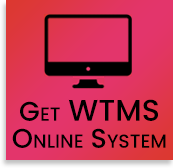
WHAT THE OPERATOR SAW
What do operators experience in a workplace driven by continuous improvement? To find out, we must look at the “Before” state—before continuous improvement, before empowerment, and before lean and its strategic partner visuality have become a corporate mandate.
In this pre-lean/pre-visual state, people hold a narrow view—associates, managers, and executives alike. They simply want to do their work and do it reasonably well. Everything and everyone is forced to exist within a narrow definition of their capability. They want excellence, but only within their own depiction of it. For operators, that meant they wanted their tools, their materials, and their work instructions. And then they wanted to get on with it….to get on with their work, their contribution.
They did not particularly want a more logical layout, a better flow, or processes that were more tightly and rightly connected. In a pre-lean/pre-visual world, employees (including soon-to-be-called “value-add associates”) simply wanted what they wanted when they wanted it. So did I. And so did you.
And yet, this was never simple. Workplace information changed quickly and often—production schedules, customer requirements, engineering specifications, operational methods, tooling and fixtures, material procurement, work-in-process, and the thousand other details on which the daily life of the enterprise depended, whether factory, hospital or bank.
The purpose of a work environment transformed by visual and lean is to convert exactly those data into information, information into meaning, and meaning into precise, repeatable, reliable, aligned, and sustainable performance.
What do operators see? When a work environment becomes a fully-functioning lean and visual workplace, each employee has instant, on-demand access to the information needed to do high quality, low-cost, timely, and safe work across a logical and highly-standardized network of critical paths (streams of value). The workplace is infused with operational intelligence that illuminates and drives the corporate intent.
At the start, this potent combination took us by surprise—managers and operators alike. Only together, we realized, could we identify and streamline the critical path through lean and invest it with precision and power through visual devices.
As associates (along with managers and executives) began to translate the new paradigm into action, they saw that they could change the process and change themselves in the process. Both improved, continuously.
This is what operators see when they experience lean/visual in action: flow is power; information is power. When I work in such a fully-functioning environment, I will get the tools, information, and materials I need when and as I need them because I have made it so. Going to work every day in such a place, I become powerful. We become powerful. We become self-leaders. We take responsibility.




